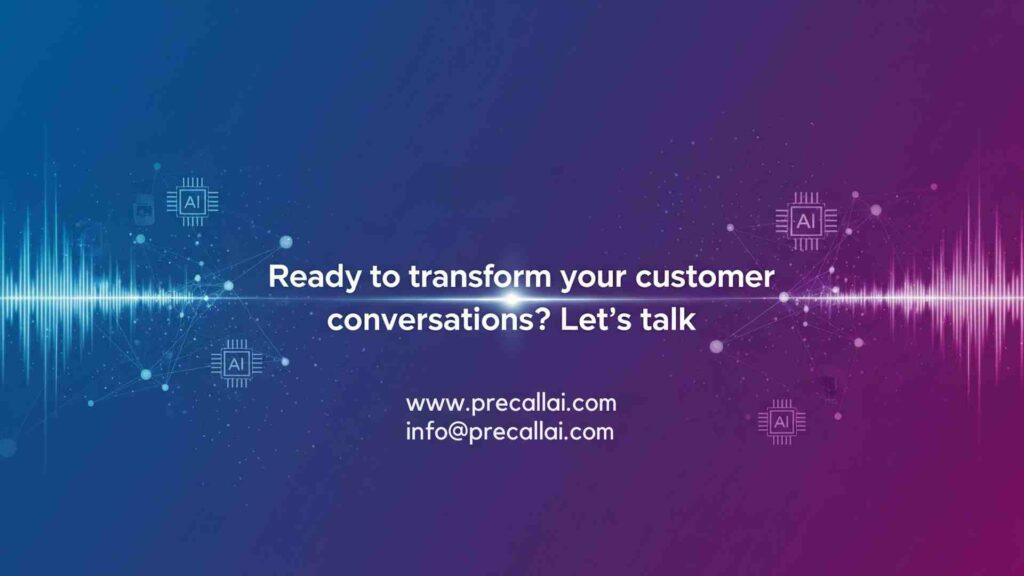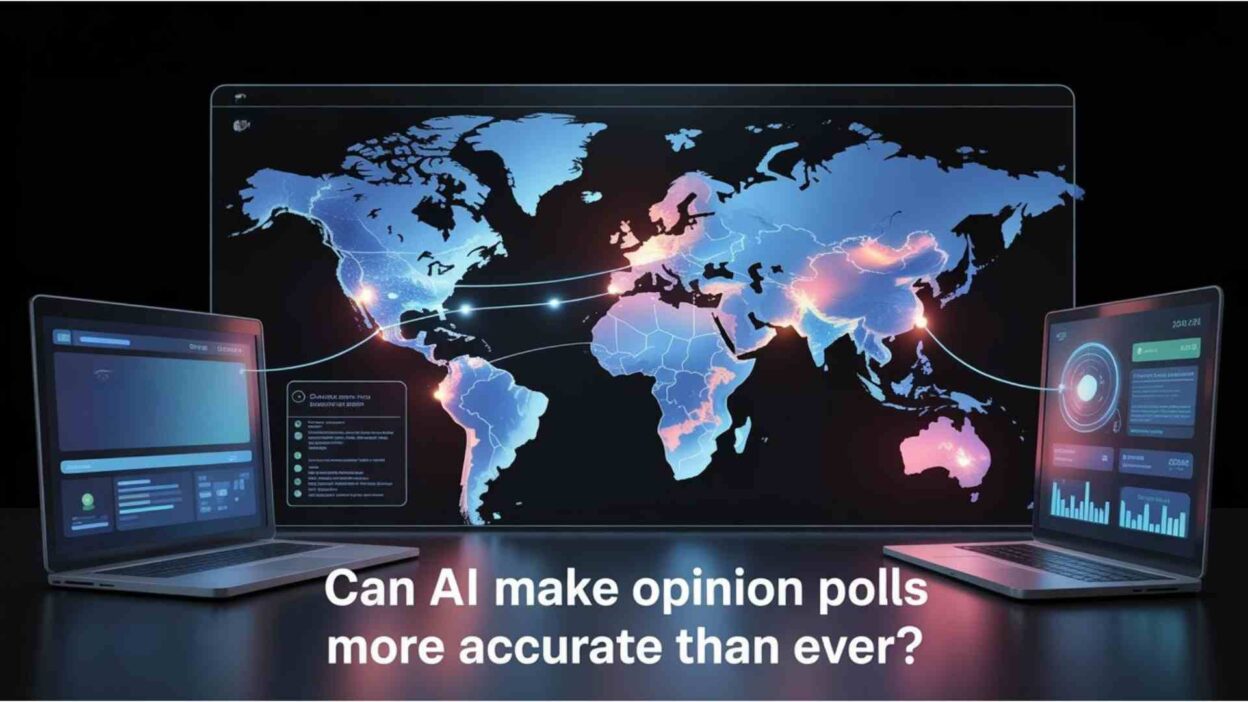TL;DR Opinion polls shape critical decisions across industries and governments. Political campaigns rely on survey data to understand voter sentiment. Businesses use customer feedback to guide product development. Market researchers track consumer preferences to predict trends. The challenge lies in collecting accurate unbiased data that reflects true opinions.
Table of Contents
Traditional polling methods face mounting accuracy problems. Phone surveys reach limited demographics missing younger populations. Response rates continue declining year after year. Survey fatigue causes participants to rush through questionnaires. These issues compromise data quality and lead to flawed conclusions.
Artificial intelligence brings revolutionary capabilities to opinion polling. Machine learning algorithms detect response patterns indicating dishonest answers. Natural language processing analyzes open-ended feedback at massive scale. Automated systems reach diverse populations more effectively than human callers. Companies looking to buy AI survey bot for business discover technology that transforms data collection fundamentally.
The Accuracy Crisis in Traditional Polling
Polling accuracy suffered embarrassing failures during recent major elections. Surveys predicted outcomes that differed dramatically from actual results. The 2016 US presidential election shocked pollsters with unexpected outcomes. Brexit polls similarly failed to anticipate the referendum result. These high-profile mistakes damaged public confidence in survey research.
Multiple factors contribute to declining polling accuracy. Sampling methods struggle to reach representative populations. Younger demographics avoid phone calls from unknown numbers entirely. Political polarization increases refusal rates among certain groups. Online opt-in surveys attract participants with stronger opinions creating selection bias.
Response bias distorts results when certain groups participate disproportionately. Enthusiastic supporters of candidates respond more readily than lukewarm voters. This enthusiasm gap skews predictions toward passionate minorities. Pollsters attempt corrections through weighting but corrections introduce new uncertainties.
Declining Response Rates
Phone survey response rates dropped below 10% in many markets. People screen calls aggressively to avoid telemarketers and scammers. The few who answer represent increasingly unrepresentative samples. Busy professionals ignore survey requests while retirees answer more frequently. This demographic skew corrupts data before analysis even begins.
Online survey participation faces similar challenges despite easier access. Email inboxes overflow with requests drowning legitimate surveys. Survey fatigue leads to careless rushed responses. Participants satisfice rather than optimize their answers. They select middle options or agree with statements without careful consideration.
Businesses seeking to buy AI survey bot for business address these participation challenges effectively. Automated systems reach respondents through preferred channels at convenient times. Conversational interfaces reduce survey fatigue through natural dialogue. The technology adapts questions based on previous responses maintaining engagement.
Social Desirability Bias
People provide answers they believe researchers want to hear. Social desirability bias causes respondents to present themselves favorably. Political surveys suffer when voters hide socially unpopular opinions. The phenomenon explains polling failures where results contradicted actual behavior.
Sensitive topics trigger particularly strong social desirability effects. Respondents underreport controversial beliefs and behaviors. They overstate socially praised activities like voting and volunteering. The gap between reported and actual behavior undermines data validity.
Anonymous surveys reduce but don’t eliminate social desirability bias. Participants still imagine judgment from researchers or society generally. Cultural norms shape responses even in supposedly confidential settings. Traditional methods lack mechanisms to detect or correct these distortions.
How AI Enhances Survey Design
Artificial intelligence improves surveys before any data collection begins. Machine learning analyzes thousands of previous questionnaires identifying design patterns. Natural language processing evaluates question clarity and neutrality. These capabilities help researchers avoid common mistakes that compromise accuracy.
Question wording profoundly influences survey responses. Leading questions bias answers toward particular viewpoints. Ambiguous phrasing confuses respondents producing meaningless data. AI systems review draft surveys flagging problematic questions automatically. This quality control prevents issues that plague manually designed surveys.
Survey length affects completion rates and response quality. Lengthy questionnaires cause abandonment and careless answers. AI optimizes question selection balancing comprehensiveness with participant burden. Adaptive surveys adjust length based on respondent engagement patterns. Interested participants receive more detailed questions while others complete shorter versions.
Intelligent Question Sequencing
Question order shapes how respondents think about subsequent items. Earlier questions prime certain mental frameworks affecting later responses. Skilled researchers carefully sequence questions to minimize these effects. AI analyzes optimal ordering across millions of possible arrangements.
Adaptive questioning adjusts survey paths based on individual responses. Irrelevant questions disappear when earlier answers make them unnecessary. This personalization reduces survey length while maintaining data completeness. Respondents appreciate skipping obviously inapplicable questions.
Organizations that buy AI survey bot for business gain sophisticated branching logic automatically. The system creates conversational flows that feel natural rather than robotic. Respondents engage more deeply when surveys adapt intelligently. This engagement improvement directly enhances data accuracy.
Bias Detection in Question Design
Subtle wording choices introduce unintended bias into survey questions. Loaded language sways opinions before respondents consciously notice. Human reviewers miss these subtle influences despite careful editing. AI natural language processing identifies bias with superhuman consistency.
Sentiment analysis evaluates emotional valence in question phrasing. Questions with positive or negative connotations get flagged for revision. The system suggests neutral alternatives maintaining the intended meaning. This automated editing process removes researcher blind spots.
Cultural sensitivity checking prevents unintended offense across diverse populations. Language appropriate in one demographic alienates another. AI cross-references questions against cultural norms databases. Researchers receive warnings about potentially problematic phrasing before surveys launch.
AI-Powered Response Collection Methods
Data collection represents the most critical phase determining accuracy. Traditional methods constrain researchers to limited channels and approaches. AI enables collection through multiple platforms simultaneously. This omnichannel approach reaches broader more representative populations.
Conversational AI conducts surveys through natural dialogue rather than forms. Respondents chat with intelligent bots mimicking human conversation. The informal interaction reduces survey fatigue and improves completion rates. People provide more thoughtful answers in conversational formats.
Asynchronous survey delivery accommodates varied schedules and time zones. Respondents complete surveys when convenient rather than during scheduled calls. This flexibility increases participation across busy populations. Working professionals engage during commutes or evening downtime.
Chatbot Survey Interfaces
Modern survey chatbots understand natural language inputs. Respondents type or speak answers in their own words. The AI interprets responses categorizing them appropriately. This natural interaction feels nothing like traditional rigid surveys.
Voice-enabled surveys reach populations with limited literacy or typing ability. Respondents speak answers while AI transcribes and analyzes responses. This accessibility expands demographic reach significantly. Elderly populations and busy multitaskers engage more readily through voice.
Companies choosing to buy AI survey bot for business implement these conversational capabilities easily. The technology requires no coding knowledge for basic deployment. Drag-and-drop interfaces allow rapid survey creation and customization. Businesses launch sophisticated surveys within hours rather than weeks.
Multi-Platform Distribution
AI systems distribute surveys across social media, messaging apps, and websites. Respondents engage through their preferred platforms naturally. This distribution strategy reaches demographics that ignore email and phone surveys. Younger populations respond readily when surveyed through familiar channels.
SMS surveys achieve remarkably high open and response rates. Text messages get read within minutes of delivery. Short conversational SMS surveys collect feedback efficiently. The immediacy captures opinions before respondents forget experiences.
In-app surveys collect feedback during actual product usage. Context-aware systems trigger surveys at optimal moments. Users provide specific feedback about features they just used. This real-time collection captures accurate sentiment before memory fades.
Machine Learning for Response Analysis
AI transforms survey analysis from slow manual coding to instant insights. Traditional analysis requires weeks of human effort categorizing responses. Machine learning processes thousands of responses in seconds. This speed enables real-time decision making based on current data.
Natural language processing extracts meaning from open-ended responses. Respondents express opinions in diverse unpredictable ways. AI identifies common themes across varied phrasings. The system quantifies sentiment and emotion without human interpretation.
Pattern recognition algorithms detect response sets indicating inattentive participants. Some respondents select the same answer repeatedly without reading questions. Others create patterns like alternating between options. AI flags these low-quality responses for exclusion automatically.
Sentiment Analysis Capabilities
Sentiment analysis determines emotional tone in text responses. The technology distinguishes positive, negative, and neutral opinions. More sophisticated systems detect specific emotions like anger, joy, or frustration. This emotional intelligence surpasses simple word counting approaches.
Aspect-based sentiment analysis links emotions to specific topics. A product review might praise design while criticizing customer service. The AI separates these distinct sentiments accurately. This granular analysis reveals nuanced opinions that aggregate scores miss.
Businesses that buy AI survey bot for business leverage sentiment analysis automatically. Every open-ended response gets scored for emotional content instantly. Reports visualize sentiment trends across demographics and time periods. Decision makers identify problems and opportunities from feedback immediately.
Anomaly Detection
Statistical algorithms identify suspicious response patterns suggesting fraud or inattention. Survey farms employ workers to complete questionnaires for payment. These professional survey takers provide low-quality data polluting results. AI detects these participants through timing patterns and response consistency.
Impossible response combinations indicate careless or dishonest participants. Someone claiming to be 18 years old with 30 years work experience triggers alerts. AI cross-references responses identifying logical impossibilities. These bad actors get filtered before corrupting analysis.
Timing analysis reveals rushed completion indicating superficial engagement. Respondents completing lengthy surveys in impossible timeframes clearly didn’t read carefully. AI flags these speed demons for exclusion or follow-up verification. Data quality improves dramatically through these automated quality controls.
Addressing Sampling Bias With AI
Representative samples form the foundation of accurate opinion polling. Traditional sampling methods struggle reaching diverse populations proportionally. Certain demographics consistently participate more while others remain underrepresented. AI enhances sampling through intelligent recruitment and weighting.
Targeted recruitment algorithms identify hard-to-reach populations. The systems analyze demographic gaps in current samples. Recruitment efforts intensify toward underrepresented groups. This dynamic approach balances samples better than static recruiting.
Real-time sample monitoring tracks demographic composition during collection. Researchers observe representation gaps while surveys remain open. They adjust recruitment strategies mid-collection correcting imbalances. This agility prevents discovering representation problems after closing surveys.
Dynamic Sample Balancing
AI adjusts sampling as responses accumulate maintaining representation. The system calculates demographic targets based on population parameters. Recruitment intensity increases for underrepresented groups automatically. This dynamic balancing produces more accurate samples than traditional fixed quotas.
Weighting algorithms correct remaining imbalances after collection completes. Statistical techniques adjust response importance based on demographic frequency. Underrepresented groups receive higher weights compensating for small sample sizes. AI optimizes weighting formulas minimizing bias while preserving statistical power.
Organizations seeking to buy AI survey bot for business benefit from built-in balancing features. The technology handles complex sampling mathematics automatically. Researchers specify target demographics and AI manages recruitment accordingly. This automation democratizes sophisticated sampling methods.
Identifying Hidden Demographics
Machine learning discovers demographic segments researchers never considered. Cluster analysis groups respondents by shared characteristics and opinions. These data-driven segments often prove more meaningful than traditional categories. Researchers gain insights into real opinion patterns rather than assumed divisions.
Behavioral segmentation categorizes respondents by actions rather than demographics. How people behave predicts opinions better than age or location alone. AI identifies these behavioral patterns across massive datasets. The resulting segments enable more accurate predictions and targeting.
Psychographic profiling builds detailed personality and value profiles. Respondents’ language choices reveal underlying beliefs and motivations. Natural language processing extracts these psychological dimensions automatically. This depth of understanding surpasses what traditional surveys capture.
Real-Time Polling and Trend Detection
Traditional polls provide snapshots at specific moments. Opinions shift rapidly making snapshot data quickly obsolete. Campaigns and businesses need continuous monitoring of sentiment trends. AI enables always-on polling capturing opinion evolution in real time.
Continuous surveying reaches small random samples daily rather than large batches. Daily results feed into rolling averages smoothing random fluctuations. This approach reveals genuine trends while filtering noise. Decision makers track opinion momentum rather than isolated measurements.
Event detection algorithms identify sudden opinion shifts requiring attention. Unexpected news events trigger immediate sentiment changes. AI alerts researchers to significant movements within hours. This speed enables rapid response to emerging situations.
Predictive Modeling
Machine learning predicts future opinions based on current trajectories. Time series analysis identifies momentum in opinion trends. Algorithms forecast likely outcomes weeks or months ahead. These predictions help organizations prepare for anticipated changes.
Scenario modeling evaluates how different events might influence opinions. Researchers input hypothetical situations and AI projects likely responses. This capability supports strategic planning and risk assessment. Organizations simulate public reaction before making controversial decisions.
Companies that buy AI survey bot for business implement predictive capabilities easily. The systems continuously collect baseline data enabling accurate forecasting. Trend reports highlight growing or declining sentiments automatically. Strategic planning improves through data-driven foresight.
Automated Reporting
Real-time dashboards visualize survey results as responses arrive. Stakeholders access current data without waiting for manual report preparation. Interactive visualizations enable exploration of results from multiple angles. This immediacy supports faster more informed decision making.
Automated alerts notify stakeholders of significant findings instantly. The system identifies noteworthy patterns and sends notifications. Decision makers learn about problems or opportunities immediately. This proactive reporting prevents overlooking important insights.
Natural language generation creates written summaries of survey results. AI translates statistical findings into readable narratives. Executives receive plain-language briefs without interpreting charts. This accessibility democratizes data insights across organizations.
Combating Survey Fraud and Bot Responses
Online surveys face increasing threats from fraudulent responses. Automated bots complete surveys mimicking human behavior. Survey farms employ low-wage workers providing meaningless data. These threats undermine data integrity requiring sophisticated countermeasures.
CAPTCHA systems prove respondents are human rather than bots. Modern challenges go beyond simple text recognition. Behavioral analysis detects bot-like patterns even when they solve CAPTCHAs. AI identifies subtle differences between human and automated responses.
Device fingerprinting prevents multiple responses from single individuals. The system tracks browser configurations and network characteristics. Attempts to complete surveys repeatedly get blocked automatically. This protection maintains sample independence critical for accuracy.
Behavioral Biometrics
Behavioral analysis examines how respondents interact with surveys. Humans display natural variation in timing and movement patterns. Bots show suspicious consistency across response sequences. AI distinguishes legitimate participants from fraudulent ones.
Mouse movement tracking reveals natural human imprecision and hesitation. Humans rarely move cursors in perfectly straight lines. They pause and adjust while reading and thinking. Bots create unnaturally smooth precise movements.
Organizations choosing to buy AI survey bot for business gain fraud protection automatically. The technology monitors response patterns in real time. Suspicious participants get additional verification challenges. Data quality improves through invisible security measures.
Quality Verification Questions
Instructional manipulation checks embed attention verification questions. These items ask respondents to select specific answers proving careful reading. Participants who fail these checks show insufficient attention. AI flags them for exclusion from analysis.
Consistency checks compare related responses for logical coherence. Someone claiming perfect health should not report multiple chronic conditions. AI identifies these contradictions automatically. Inconsistent participants receive lower confidence scores or exclusion.
Open-ended response analysis verifies thoughtful engagement. Generic one-word answers suggest minimal effort. AI evaluates response depth and relevance to questions. Participants providing shallow responses get flagged for quality review.
Ethical Considerations in AI Polling
AI polling raises important ethical questions requiring careful consideration. Algorithmic decision-making can perpetuate or amplify existing biases. Privacy concerns arise from sophisticated tracking and profiling. Researchers must navigate these challenges maintaining ethical standards.
Transparency about AI usage builds trust with survey participants. Respondents deserve knowing when they interact with automated systems. Clear disclosure of AI involvement respects participant autonomy. Organizations should explain how AI protects privacy and improves accuracy.
Algorithmic fairness ensures AI treats all demographic groups equitably. Biased training data can lead to discriminatory outcomes. Regular audits check for disparate impacts across populations. Researchers must actively monitor and correct algorithmic biases.
Privacy Protection
Data minimization principles limit collection to necessary information only. AI systems should not gather excessive personal details. Strong security measures protect collected data from breaches. Encryption and access controls prevent unauthorized disclosure.
Anonymization techniques remove identifying information from datasets. AI can analyze aggregated patterns without individual identification. This approach balances insight generation with privacy protection. Participants share opinions without compromising personal information.
Businesses that buy AI survey bot for business must prioritize privacy features. Compliant systems follow regulations like GDPR and CCPA. Built-in privacy protections reduce organizational liability. Ethical data handling builds participant trust and engagement.
Informed Consent
Participants deserve clear information about survey purposes and data usage. Consent processes should explain AI involvement straightforwardly. People should understand how algorithms analyze their responses. This transparency respects individual dignity and autonomy.
Opt-out mechanisms allow participants to exclude their data from AI analysis. Some people prefer human review of their responses. Providing choices demonstrates respect for participant preferences. Forced participation undermines data quality anyway.
Regular review of consent processes ensures they remain meaningful. AI capabilities evolve requiring updated explanations. Organizations should refresh consent language as technology changes. This ongoing attention maintains ethical standards over time.
Industry Applications of AI Polling
AI-enhanced polling delivers value across diverse industries and applications. Political campaigns track voter sentiment with unprecedented precision. Market researchers understand consumer preferences in real time. Human resources departments measure employee engagement continuously.
Healthcare organizations assess patient satisfaction identifying improvement opportunities. Educational institutions gather student feedback guiding curriculum development. Government agencies measure citizen opinion on policy proposals. Every sector benefits from more accurate opinion measurement.
The retail industry uses AI surveys to predict purchasing behavior. Customer sentiment analysis identifies products gaining or losing popularity. Real-time feedback guides inventory and marketing decisions. These insights drive revenue while reducing waste.
Political Campaigns
Election campaigns require accurate voter sentiment tracking. Traditional polls failed dramatically in recent elections. AI methods address the sampling and bias issues that caused failures. Campaign strategists make better decisions based on reliable data.
Micro-targeting identifies persuadable voters more accurately. AI analyzes millions of data points predicting individual voter behavior. Campaigns direct resources toward highest-impact audiences. This efficiency maximizes limited campaign budgets.
Political organizations seeking to buy AI survey bot for business implement voter contact systems. The technology conducts thousands of voter conversations daily. Real-time sentiment dashboards guide strategic decisions. Campaign managers respond quickly to shifting political winds.
Market Research
Consumer product companies need deep understanding of customer preferences. Traditional focus groups provide limited insight from small samples. AI surveys reach thousands providing statistically robust findings. This scale reveals subtle preference patterns across demographics.
Concept testing evaluates new product ideas before expensive development. AI systems test multiple variations simultaneously. Rapid iteration identifies winning concepts early. This efficiency reduces development costs and time-to-market.
Competitive intelligence surveys track brand perception relative to competitors. AI identifies specific strengths and weaknesses in market positioning. Companies adjust strategies based on objective consumer feedback. This insight prevents costly mistakes and missed opportunities.
Employee Engagement
Human resources departments measure workplace satisfaction through regular surveys. Traditional annual surveys provide stale data by the time analysis completes. AI enables continuous pulse surveys tracking engagement in real time. HR responds to problems before they escalate.
Exit interview analysis reveals patterns in employee departures. Natural language processing categorizes reasons for leaving automatically. Organizations identify systemic issues rather than individual complaints. Retention improves through data-driven interventions.
Companies that buy AI survey bot for business implement internal feedback systems. Anonymous conversational surveys encourage honest employee input. Management receives actionable insights about workplace culture. Employee satisfaction improves when people feel heard.
Implementation Considerations
Organizations considering AI polling should evaluate several key factors. Technical capabilities vary significantly across platforms and vendors. Implementation complexity ranges from simple to highly technical. Business needs should guide platform selection decisions.
Budget considerations include not just subscription costs but implementation time. Some solutions require extensive technical expertise and integration work. Others offer turnkey implementations ready within hours. Total cost of ownership extends beyond license fees.
Integration with existing systems determines practical utility. Survey data should flow into analytics platforms and dashboards. CRM integration enables personalized follow-up based on responses. These connections maximize value from collected data.
Platform Selection Criteria
Feature completeness varies across AI survey platforms. Some excel at question design while others focus on analysis. Organizations should list required capabilities before evaluating options. Demonstrations reveal whether platforms meet specific needs.
Scalability ensures systems handle growing response volumes. A solution working for hundreds of responses might fail with thousands. Cloud-based platforms typically scale automatically. This flexibility accommodates business growth without system changes.
Businesses ready to buy AI survey bot for business should evaluate vendor support quality. Responsive technical assistance prevents implementation delays. Training resources help teams maximize platform capabilities. Strong vendor relationships contribute to long-term success.
Training and Adoption
Staff members need training to use AI survey tools effectively. User-friendly interfaces minimize learning curves. Comprehensive documentation and tutorials accelerate adoption. Organizations should budget time for team training.
Change management helps teams embrace new methodologies. Some researchers resist AI viewing it as threatening. Education about AI augmentation rather than replacement reduces resistance. Demonstrating early wins builds enthusiasm and adoption.
Best practices evolve as teams gain experience with AI tools. Organizations should encourage experimentation and learning. Sharing successes and failures across teams accelerates capability building. Continuous improvement maximizes return on technology investment.
Measuring AI Polling Accuracy
Organizations must verify that AI actually improves polling accuracy. Validation studies compare AI predictions against actual outcomes. Election results provide clear benchmarks for political polling. Purchase behavior validates consumer preference surveys.
Benchmark comparisons show AI performance versus traditional methods. Running parallel surveys reveals accuracy differences. Statistical analysis determines whether improvements reach significance. These studies justify continued investment in AI approaches.
Continuous monitoring tracks accuracy over time as systems learn. Machine learning improves through exposure to more data. Organizations should measure performance regularly. Declining accuracy signals problems requiring investigation.
Predictive Validation
Election forecasting provides clear accuracy tests. Predictions either match results or they don’t. Post-election analysis reveals which methodologies performed best. AI polling increasingly shows superior accuracy in these high-stakes tests.
Market research validation compares predicted behavior to actual purchases. Sales data reveals whether surveys correctly identified preferences. Close alignment between prediction and behavior confirms methodology. Discrepancies highlight areas needing improvement.
Organizations that buy an AI survey bot for business track prediction accuracy carefully. Documented improvements justify technology investment to leadership. Objective performance data guides platform selection and methodology refinement. This evidence-based approach ensures resources support effective tools.
Quality Metrics
Response rate tracking measures survey accessibility and appeal. Higher completion rates suggest engaging survey experiences. AI conversational interfaces typically achieve better rates than traditional forms. This metric indicates methodological quality.
Data quality scores assess response validity and reliability. High-quality data shows logical consistency and thoughtful engagement. AI filtering removes low-quality responses, improving overall accuracy. These scores guide continuous quality improvement efforts.
Sample representativeness compares survey demographics to target populations. Balanced samples increase confidence in results. AI sampling methods should produce more representative samples. This metric validates sampling methodology effectiveness.
Read More: How Quickly Can Enterprises Deploy AI Voice Technology?
Conclusion

Can AI make opinion polls more accurate than ever? The evidence strongly supports this conclusion across multiple dimensions. Traditional polling faces severe accuracy challenges from declining response rates and selection bias. High-profile polling failures damaged public confidence in survey research. These problems demand new approaches that AI uniquely provides.
Fraud detection protects data integrity against sophisticated threats. Automated quality controls filter bad actors and inattentive respondents. Behavioral biometrics distinguish humans from bots invisible to participants. These protections maintain data quality at scale.
Industry applications demonstrate AI polling value across diverse contexts. Political campaigns make better strategy decisions based on reliable voter data. Market researchers understand consumer preferences with unprecedented precision.
Businesses seeking to buy an AI survey bot for business find abundant options. The market offers solutions for every budget and requirement level. Careful evaluation ensures the selection of platforms matching specific needs. Vendor demonstrations reveal capabilities before financial commitment.
Training requirements remain minimal with user-friendly platforms. Most teams become productive within days of implementation. Ongoing learning occurs naturally through regular use. Organizations build polling expertise while collecting valuable data.






[…] Read More: Can AI Make Opinion Polls More Accurate Than Ever? […]